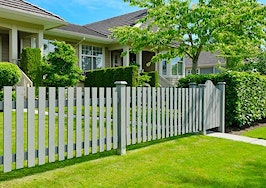- Five percent of all single-family home and condominium sales in the third quarter were flipped, according to RealtyTrac.
- That’s a slight decrease from the 5.4-percent share of flipped homes in the second quarter, but an 18-percent increase over the 4.3-percent share reported in the third quarter of last year.
- Completed home flips in Q3 yielded an average of $62,122 in average gross profit, a slight decrease over Q2’s average gross profit of $62,521 and a slight increase from the average gross profit of $61,781 in Q3 2014.
After shying away from house flipping in the last year due to slow home price appreciation and tight inventory, real estate investors are back on the flipping bandwagon, according to RealtyTrac’s U.S. Home Flipping Report for the third quarter.
Five percent of all single-family home and condominium sales in the third quarter were flipped, according to RealtyTrac. That’s a slight decrease from the 5.4-percent share of flipped homes in the second quarter, but an 18-percent increase over the 4.3-percent share reported in the third quarter of last year, when the share of flipped homes hit its lowest quarterly level since the first quarter of 2000.

“On the acquisition side, investors are finding creative ways to pinpoint potential flips in the off-market arena, and on the disposition side, investors have a bigger pool of potential buyers thanks to a surge in FHA buyers this year, many of them first-time buyers looking for starter homes,” said RealtyTrac Vice President Daren Blomquist.
However, average gross flipping profit and average return on investment (ROI) fell slightly during the last quarter, RealtyTrac reported. Completed home flips in Q3 yielded an average of $62,122 in average gross profit, a slight decrease over Q2’s average gross profit of $62,521 and a slight increase from the average gross profit of $61,781 in Q3 2014.
Average gross ROI was 33.8 percent in Q3, falling from the 34.4 percent average gross ROI reported in Q2, but rising slightly over Q3 2014’s average gross ROI of 32.7 percent.
Markets with the highest share of home flipping as a percentage of all single-family home and condo sales were:
- Las Vegas, with a 8.7-percent share
- Miami, with a 8.6 percent share
- Jacksonville, Florida, with a 7.6-percent share
- Baltimore, Maryland, with a 7.4-percent share
- Birmingham, Alabama, with a 7.4-percent share
- Phoenix, with a 7.3-percent share
- Orlando, with a 7.2-percent share
- New Orleans, with a 6.9-percent share
- Virginia Beach, with a 6.8-percent share
- Riverside-San Bernardino in Southern California, with a 6.5-percent share

Some areas are seeing particularly high shares of flipping to millennials:
- Philadelphia County, Pennsylvania
- Saint Louis
- Baltimore, Maryland
- Cumberland County, North Carolina
- Kings County, New York
Other markets offer flipping advantages to baby boomers: Five counties in Florida — Charlotte, Hernando, Volusia, Brevard and Marion — as well as the Seattle/Vancouver area; the Atlantic Coast between Washington, D.C., and Philadelphia; and the Asheville, North Carolina, metro area.
Markets with the smallest share of flipped homes were:
- Memphis, with a 10.5-percent share
- Fresno, California, with a 9.5-percent share
- Mobile, Alabama, with a 9.2-percent share
- Tampa, Florida, with a 9.1-percent share
- Deltona-Daytona Beach-Ormond Beach, Florida, with a 9-percent share
RealtyTrac defines a “flipped” home as a home that is sold as part of an arms-length sale for the second time within a 12-month period.









